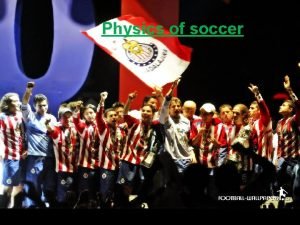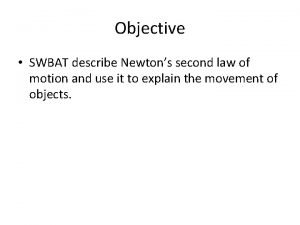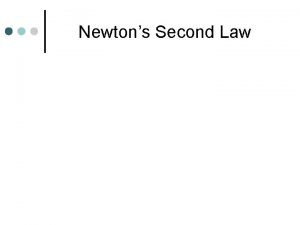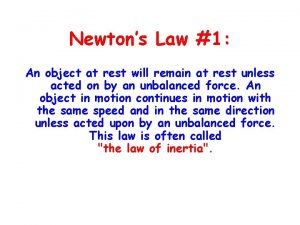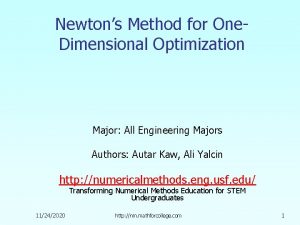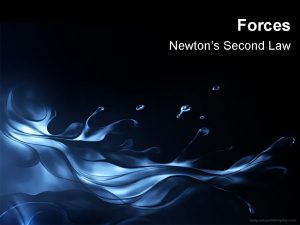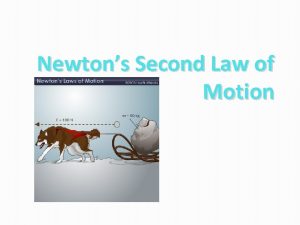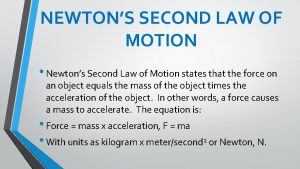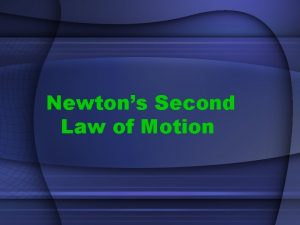Lesson 4 Acceleration Newtons Second Law Newtons Second














- Slides: 14

Lesson 4: Acceleration - Newton’s Second Law

Newton’s Second Law of Motion Acceleration of an object is directly related to applied force, and inversely related to the mass of the object.

Discovery Education Video Science Video Vocab: Acceleration Explains the forces behind acceleration and reveals how gravity relates to acceleration.

Acceleration is a change in the velocity of an object or body. Velocity is the speed and direction of a moving object.

Acceleration can be positive or negative.

Positive Acceleration = Increasing Speed Negative Acceleration = Decreasing Speed

Two Factors Affect Acceleration Force – The more force on an object, the greater the acceleration (directly related). Mass – The more mass an object has, the more force will be needed to accelerate it. (inversely related).

Observing Acceleration: Cars on a Ramp Purpose: to observe and predict the effect of changes in mass and force on the acceleration of a toy car. Materials: ramps, toy cars, weights, stopwatches

Observing Acceleration: Cars on a Ramp Hypothesis: What do you think will happen? Experiment Procedure: What did you do? (step by step) Results / Analysis: What happened? Explain your results in detail! Conclusion: Was your hypothesis correct? What did you learn?

Acceleration Graphs Position / Time Graphs

Acceleration Graphs Velocity / Time Graphs

Acceleration Graphs Position / Time Graphs

Acceleration Graphs Velocity / Time Graphs

Acceleration: Key Questions 1. Describe the effect that mass and force have on acceleration. 2. Based on Newton’s second law of motion, explain why a smaller car will generally use less fuel than a larger car. 3. Describe how an acceleration graph could be useful.
 Newton's first law and second law and third law
Newton's first law and second law and third law Si unit of newton's first law
Si unit of newton's first law Inertia in soccer
Inertia in soccer Describe newtons second law
Describe newtons second law Newton's second law
Newton's second law Second law of newton definition
Second law of newton definition Newtons second law
Newtons second law Newtons second law example
Newtons second law example What is centripetal acceleration
What is centripetal acceleration Angular acceleration vs linear acceleration
Angular acceleration vs linear acceleration Radial acceleration formula
Radial acceleration formula Angular acceleration and linear acceleration
Angular acceleration and linear acceleration Tangential acceleration and centripetal acceleration
Tangential acceleration and centripetal acceleration Newtons second kaw
Newtons second kaw Newtons second kaw
Newtons second kaw


